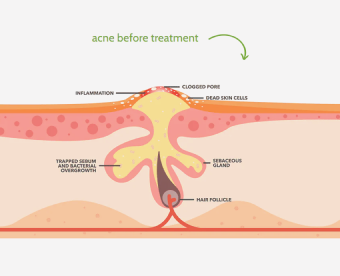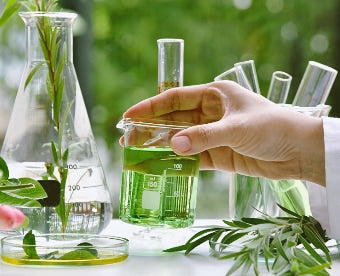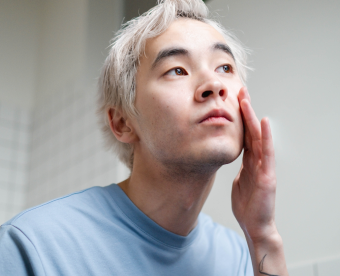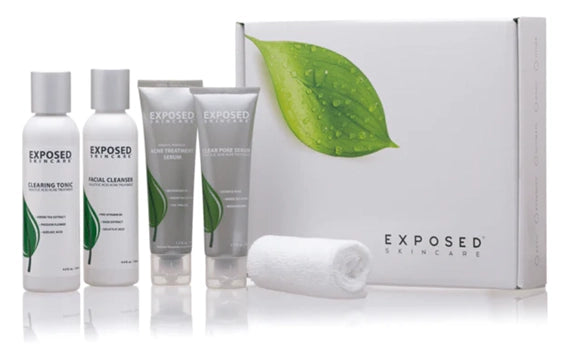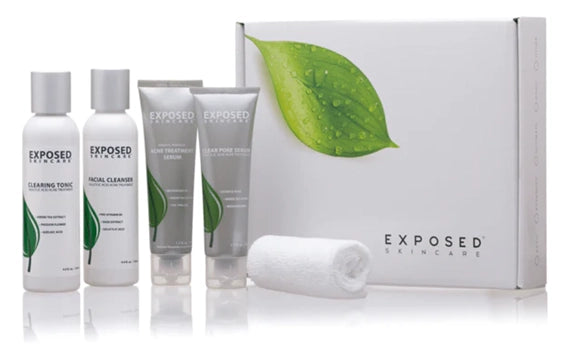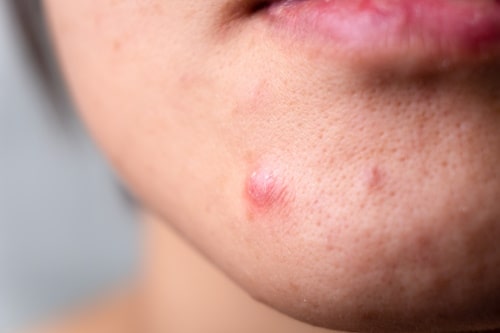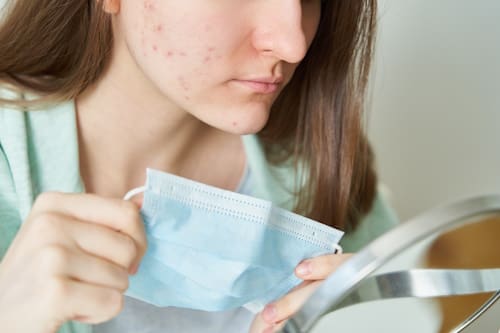Everyone dreams of having perfect, acne-free skin. Yet, achieving this often involves wading through a sea of skin care products and ingredients, each claiming to be the “miracle cure” for acne.
One of the main components you'll frequently encounter in acne treatments is acid. But what is the best acid for acne? We're here to demystify the subject and bring you the top three contenders: salicylic acid, glycolic acid, and lactic acid.
Also read: How to choose the best acne treatment
Biggest Take-Aways:
- Various types of acids like glycolic, salicylic, and lactic acid have different benefits and work in unique ways to treat acne.
- Understanding the role of acids in skin care can help you tailor your routine to not only fight acne but also address other skin issues like aging and hyperpigmentation.
- Including a range of acids in your skincare routine can offer a comprehensive treatment approach.
- Exposed Skin Care provides a broad spectrum of products with multiple beneficial acids, making it a one-stop solution for various skin care needs, including effective acne treatment.
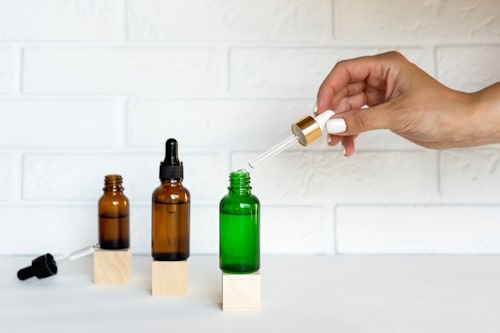
The Role of Acids in Skincare
Acids are pivotal in skincare routines, especially for those with acne-prone skin. Acids have proven to be quite effective, from exfoliating the skin to targeting specific concerns like hyperpigmentation and fine lines.
But with so many options on the market, it can be daunting to find the one that's just right for you. Let's delve into the nitty-gritty of how acids work and which one may best fit your skin type.
The Mechanism of Action
- Exfoliation: Acids act as exfoliants, helping to remove dead skin cells, thereby revealing glowing skin underneath.
- Penetration: Certain acids penetrate deep into the skin, targeting acne at its source.
- Moisturization: Acids like hyaluronic acid can help in maintaining skin moisture.
What to Consider
When choosing the best acid for acne, consider your skin type and the specific concerns you want to address, whether that's acne, dark spots, or fine lines. Certain acids may cause skin irritation, so always be mindful of potential side effects.
Salicylic Acid: The Go-To for Acne-Prone Skin
When it comes to targeting acne specifically, salicylic acid stands as one of the most recommended solutions. It belongs to the beta hydroxy acid (BHA) family and works wonders on acne-prone skin.
How Salicylic Acid Works
Salicylic acid is particularly effective in dissolving the type of skin debris that clogs pores and causes acne. It’s so effective that you'll find salicylic acid in many over-the-counter acne treatment products, from cleansers to serums.
- Penetrates Pores: Unlike other acids, salicylic acid can penetrate the pore lining and exfoliate inside the pore as well as on the surface of the skin.
- Fights Breakouts: It helps reduce breakouts, including blackheads and whiteheads.
- Anti-Inflammatory Properties: Salicylic acid also has anti-inflammatory properties, which help to reduce the redness and size of pimples.
Best Uses for Salicylic Acid
- Cleanser: Opt for a cleanser that contains salicylic acid for regular use.
- Toner: Salicylic acid toners can act as exfoliants and help in prepping your skin for other treatments.
- Serum: A salicylic acid serum can be highly effective for targeted treatment.

Glycolic Acid: The Multi-Tasker
Often found in cleansers, serums, and peels, glycolic acid is an AHA or alpha-hydroxy acid, well-known for its anti-aging benefits and fighting acne.
How Glycolic Acid Works
Glycolic acid works by breaking down substances that bond dead skin cells beneath the top layer of the skin. It's a smaller molecule than other alpha hydroxy acids, allowing it to penetrate the skin more easily.
- Exfoliating the Skin: Glycolic acid helps in exfoliating dead skin cells.
- Improves Texture: This acid helps in reducing fine lines, acne scars, and dark spots, revealing a smoother complexion.
- Boosts Collagen: Regular use of glycolic acid can stimulate collagen production, essential for skin elasticity.
Best Uses for Glycolic Acid
- Peel: Glycolic acid peels can be a more concentrated treatment for your acne and pigmentation issues.
- Serum: Look for a serum that combines glycolic acid with hyaluronic acid for hydration and anti-aging benefits.
- Moisturizer: Some moisturizers contain a lower concentration of glycolic acid and can be suitable for daily use.

Lactic Acid: Gentle Yet Effective
Lactic acid is another alpha hydroxy acid (AHA) but tends to be gentler on the skin than glycolic acid. It’s so mild that it’s often recommended for sensitive skin types.
How Lactic Acid Works
Derived mainly from fermented milk, lactic acid is larger in molecular size compared to glycolic, which makes it less irritating to the skin.
- Hydration: Lactic acid improves the skin’s natural moisture, making it ideal for dry skin.
- Exfoliation: It helps in removing the buildup of dead skin cells.
- Reduces Hyperpigmentation: Lactic acid has been shown to improve melasma and other forms of hyperpigmentation.
Best Uses for Lactic Acid
- Cleanser: A cleanser with lactic acid can be a good starting point for incorporating this acid into your skin-care routine.
- Serum: Opt for a serum that combines lactic acid with other beneficial ingredients like vitamin C and hyaluronic acid for more targeted action.
- Exfoliant: Use an exfoliating product with lactic acid to tackle dead skin without causing skin irritation.

The Exquisite Benefits of Using Exposed Skin Care for Acne Management
Navigating the vast world of skin care products can be overwhelming. However, Exposed Skin Care offers a comprehensive approach that incorporates a variety of face acids to manage acne and improve overall skin health effectively.
Why choose Exposed Skin Care?
- Wide Range of Acids: The products include powerhouse acids like salicylic and glycolic acids. This combination targets different layers of your skin, ensuring that the acne is treated from multiple angles.
- Antioxidant Boost: The ingredients in Exposed Skin Care products help neutralize free radicals, contributing to healthy skin. Say goodbye to fine lines and wrinkles and hello to youthful skin!
- Versatility: Whether you need a face wash for daily cleansing or a more targeted serum, Exposed Skin Care has you covered. Its products are enriched with AHA and BHA compounds, including glycolic acid ("glycolic"), allowing you to find the right solution tailored to your needs.
- Post-Acne Marks and Age Spots: The products tackle active acne and work on post-acne marks and age spots. With larger molecules, they come into contact with deeper layers of the skin for more effective treatment.
This suite of products is designed to make skin healthier, clearer, and more radiant and is highly recommended by those who have come into contact with its transformative effects.
Conclusion
Given the variety of options available, finding the best acid for acne can be complex. Each type of acid, whether glycolic, salicylic, or lactic acid, has unique properties that work differently on the skin. Understanding the role of acid in skin care can help you find the right regimen to tackle acne.
The range of skincare acids available means you can find the right mix to address acne and other skin issues. BHAs like glycolic acid are often recommended by those in the skincare field for their efficacy in treating acne and clearing dead skin cells.
Exposed Skin Care offers comprehensive packages that include beneficial acids and other ingredients that can penetrate deeper into the skin. The tailored approach allows for a more complete skincare routine, which many find beneficial. Exposed Skin Care stands out for its all-inclusive approach.
To conclude, you need to understand your skin's specific needs and find products that address them in the best possible way. While the number of options can be overwhelming, a well-informed choice that considers your specific skin type and needs can lead to a healthy, glowing complexion beyond just being acne-free.
FAQs
What are the best acids for treating acne?
Glycolic, salicylic, and lactic acid are commonly recommended for treating acne effectively.
Is azelaic acid good for acne?
Yes, azelaic acid is effective for treating acne, hyperpigmentation, and redness.
Can kojic acid help with acne scars?
Kojic acid focuses more on lightening skin and may not be the best option for treating active acne. However, it can help with post-acne marks.
Do larger molecules in skin care products make a difference?
Yes, larger molecules can penetrate deeper into the skin, effectively treating various skin issues.
How does Exposed Skin Care fit into an acne treatment routine?
Exposed Skin Care offers a comprehensive range of products that include a variety of effective acids for treating not just acne but also other skin issues like age spots and fine lines.

